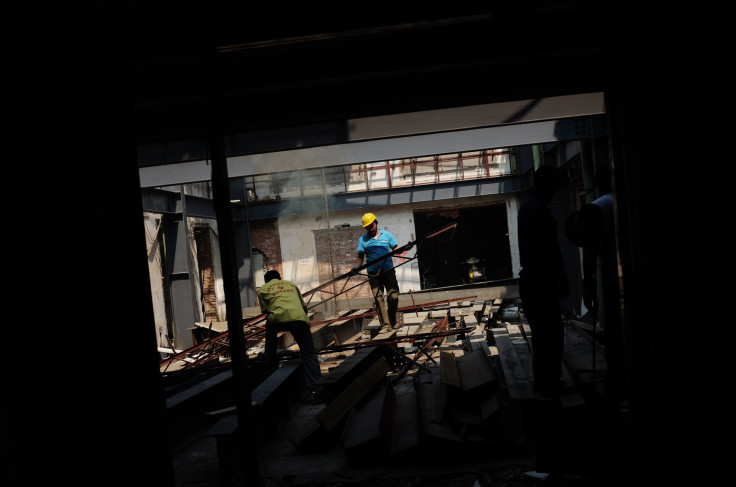China Crisis: China GDP Numbers Don’t Add Up, And That's A Problem For Anyone Doing Business There

China’s official government statistics often raise eyebrows, whether it’s the health of state-owned enterprises run by bureaucrats or national unemployment figures that ignore up to 300 million internal migrant workers. But as the world's second-largest economy slows and threatens to drag the rest of the world with it, Beijing’s official gross domestic product numbers are once again under scrutiny inside and outside the country.
Chinese billionaire, real estate magnate and Communist Party member Wang Jianlin was the most recent critic to tell Beijing to get real about growth. Jianlin's holdings include a stake in Spanish football club Atlético Madrid and U.S. movie theater chain AMC Entertainment.
"China needs to drop the fantasy of keeping a high growth rate of 7 or 8 percent and just accept 6, 7 or even 5 percent," he said at a press conference Thursday announcing his company Dalian Wanda Group’s $650 million acquisition of Tampa, Florida-based Ironman triathlon operator World Triathlon Corporation.
Jianlin stopped short of accusing the central government of cooking China’s growth numbers, but his comments echo those of independent analysts.
When China was booming back in 2007, independent estimates of the country’s gross domestic product were pretty much in line with Beijing’s. But since about 2012, as China's growth has decelerated, the difference between what China says its GDP is and what outside economists estimate has been widening. Now, China says its annual growth rate is 7 percent and some are saying the real growth rate is almost half that figure, if not less.
The fuzzy math poses a problem not just for China, but for companies doing business there.
“The level of opacity in terms of what the economy is really doing is an issue. The main challenge is not knowing what the underlying fundamentals are in China,” said John Humphrey, senior vice president of global automotive operations at J.D. Power and Associates, a global marketing information provider. “In most other markets you can see the information and you can adjust accordingly.”
Demand for industrial commodities like copper and iron ore have been in a free fall for most of the year, while private sector debt has been ballooning along with one of history’s biggest real estate bubbles. Meanwhile, Chinese households have been borrowing heavily and piling into the country’s casino-like stock markets and now are seeing their investments evaporate. And on Friday, data about China’s factory activity hit a 77-month low.
The Chinese National Bureau of Statistics released second-quarter gross domestic product numbers in July, heralding 7 percent growth in line with the country’s 2015 target, the lowest in more than two decades. But independent economic analyses contradict the official numbers.
“People in Beijing are privately talking 2.2 percent growth,” China pundit and author Gordon Chang told Fox Business Monday. “Legitimately they had double-digit growth in 2010 above 10 percent.”
As China’s economic growth falls, official figures are becoming more questionable, according to estimates based on economic activity in the country’s provinces. According to Capital Economics, China’s GDP growth was 4.3 percent in the second quarter, not 7 percent. Lombard Street Research has a lower estimate of 3.7 percent for the quarter.
For some China-watchers, the exact numbers matter little.
“Expecting China to continue to be the engine of global GDP growth, at least in 2015, is more than wishful thinking. It’s drinking that Kool-Aid,” hedge fund manager Jay Somaney wrote last week in Forbes magazine.
© Copyright IBTimes 2024. All rights reserved.






















